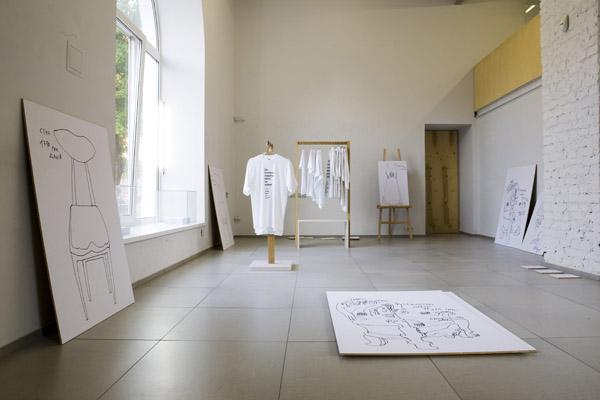 Eighteen years ago the Iron Curtain fell and intellectuals from both sides turned their looks, full of hope, on one another. Both sides were looking for liberation and both were deeply disappointed – desirable Freedom was absent in the plentiful West as well as in the ascetic East.
Eighteen years ago the Iron Curtain fell and intellectuals from both sides turned their looks, full of hope, on one another. Both sides were looking for liberation and both were deeply disappointed – desirable Freedom was absent in the plentiful West as well as in the ascetic East.Consumerism was one of the most attractive Western features for people from the Eastern block. Ability to consume was dreamed of by generations of Soviet citizens who were deprived of access to the wide choice of consumer goods because of priority of heavy industry. Ordinary Marlboro cigarettes or Levi's jeans were objects of desire, signs of privilege and luxury. Ideology failed on the level of everyday life – instead of building a "better future" people were fighting for personal benefits, establishing "blat" connections to get some better clothing or food. That's why we couldn't respond to the high expectations of Marxists intellectuals from Western universities – we wanted exactly what they were fighting against. And finally we got it – in the wild forms of primary accumulation of capital.
The rest of the story was quite banal. When one gets money, one wants to represent his or her own status. So we have record sales of prestige cars, enormous prices for realty and various boutiques and restaurants instead of old soviet shops on Kyiv's streets. But what could the wealthy do, when they bought everything possible to buy? There are a few ways of entering into the new bourgeoisie of the world – own contemporary art collections and charity. Ukrainian oligarch Victor Pinchuk combined both and leaved behind Roman Abramovich with his posh football club. PinchukArtCenter, established in Kyiv two years ago, pretends to be one of the major representational spaces for contemporary art in Eastern Europe. "Reflection" project presented there in October 2007 collected works of the most known (and the most expensive) artists, including Jeff Koons and Damien Hirst. It was a grandiose example of art shopping – the highest form of contemporary Ukrainian obsession with capitalism.
Local art sphere responded to that tendency immediately. When Soros stopped giving grants for critical art, artists turned to the so-called "actual art" – mostly oil paintings of original form and plot, good enough for collecting (what Pinchuk and others are doing) but not good to think about.
Alevtina Kakhidze's "Shopping" stands aside this context. It concludes her experience of conscious dealing with consumerism as a social phenomenon (presented modestly in small "Ya gallery", May 2008). Alevtina talks about her impressions (impressions of a person from Soviet province) of Western consumer culture. During her two-years study in Maastricht, Netherlands she found herself in some kind of fairy-tale of abundance and sufficiency. Like Alice in Wonderland, she didn't know exactly what to do with all these things and how to understand her new desires. Her first project there was entitled "I don't need it, I want it". Alevtina presented drawings of different goods multiplied on a copy machine and arranged into piles. She decided not to buy but to draw everything what she liked. Goods – all possible variations of unnecessary things were just the beginning. Consumer instinct goes further – and Alevtina draws antique furniture from auctions and even art work – appropriating it all in that way. This logic is quite understandable for a person with post-soviet background. Long ago in my childhood small girls had a funny custom – when they saw something attractive they would put their fists on chins and say "I order it". It signified their symbolic right of ownership and guaranteed that they would have it in the future.
Ukrainian "I don't need it, I want it" goes further. More goods – body, relationships, emotions become objects of construction and consumption. The very fact of possession of luxury "something" becomes more important than enjoyment or even health. Artist pointed that elegantly. She arranged the gallery space like a shop – installed multiplied copies of drawings (stating that a copy is always new and attractive, like goods in showcases), T-shirts and skirts with texts about consumption. Every single thing was for sale: black-and-white copies of sketches of goods had prices equal to prices of depicted objects. So, image of Luis Vuitton bag costs as an original bag, and drawing of Jeff Koons work – as his masterpiece. This play with copies and prices provoked questions about value in consumer society in general and value of art in particular. Kakhidze's "Shopping" has a critical value – that's why it's priceless in Ukrainian context.
Photos from “Shopping”: http://dev.yagallery.com.ua/artexhib/64/
Немає коментарів:
Дописати коментар